PILLARs
Trinity’s Three-Legged Stool:
Evangelical, Orthodox, and Ecumenical
Chip Denton
From its beginning, Trinity School has defined itself as a Christian school marked by three important qualities: evangelical, orthodox, and ecumenical. We have sometimes called this the “three-legged stool.” All three of these legs play a part in keeping Trinity stable and sturdy. If even one of these is shortened, the school goes wobbly.
Recently, people have been asking anew what we mean by some of these terms, and I welcome the chance to talk about this. We might wish that we could simply say, “Trinity is a Christian school,” and stop there. But for an independent and nondenominational school, it is quite important to be clear about the shape of one’s Christian commitment. I thought it might be helpful for us to reflect on each of these terms, and I begin with the question: What does it mean for Trinity to be evangelical?
The Three-Legged Stool of Trinity School, Part 1: Evangelical
The first thing to be said, especially in the current political climate, is that the founders of Trinity did not envision this term as a political designation. This runs counter to the most common use of the term, for the media and the mainstream culture understand evangelical to refer to a particular voting block. Evangelical political alignments are—like liberal political alignments—complicated and imperfect compromises; and while there may be political trends among those who call themselves evangelical, the essence of what it means to be an evangelical is not in one’s political life. I do not mean to denigrate politics as an expression of one’s faith, but I do not want to start there in defining the term.
To show you what the founders of Trinity resonated with, I want to take you back to 1974—not the birth of evangelicalism, but one of its high-water marks. That year, in Lausanne, Switzerland, 2,400 Christians from 150 nations gathered for prayer, preaching, and planning to “unite all evangelicals in the common task of the total evangelization of the world” (Billy Graham). The central figures of that conference were Billy Graham, Francis Schaeffer, Ralph Winter, Carl Henry, and John Stott. In Graham we see the evangelical passion for evangelism, in Francis Schaeffer the evangelicals’ desire to engage with culture (a very different posture from their separatist theological cousins, the fundamentalists). In Ralph Winter we hear the clarion call for world evangelization (Winter coined the phrase “unreached people groups” at this conference), and in Carl Henry we see the intellectual horsepower to wrestle with important theological concepts and to advance the kingdom through serious publishing. It was John Stott, the Anglican rector of All Souls Langham Place, who penned so much of the great Lausanne Covenant, and if you want to understand the heart and soul of evangelicalism, you could not do better than to read that great confessional piece. In many ways, Stott became the voice of this theological movement, and it was gratifying to many of us to see NYT columnist David Brooks pay him tribute back in 2004.
For those (like Trinity’s founders) who find evangelical to be a positive designation, it is first and foremost a theological term. For them, it retains some etymological heft, coming from the Greek word for “good news.” Evangelicals have always had this deep conviction that the news about Jesus Christ is the best thing anyone could ever hear. More recently, the National Association of Evangelicals (yes, there is such a group, along with Evangelicals for Social Action and the Evangelical Theological Society) has teamed up with LifeWay Research to describe those beliefs that evangelicals—who by definition come from various denominations within Christianity—hold. “Evangelicals are people of faith and should be defined by their beliefs, not by their politics or race,” said NAE president Leith Anderson at the release of this collaborative research project. Four key beliefs emerged:
- The Bible is the highest authority for what I believe.
- It is very important for me personally to encourage non-Christians to trust Jesus Christ as their Savior.
- Jesus Christ’s death on the cross is the only sacrifice that could remove the penalty of my sin.
- Only those who trust in Jesus Christ alone as their Savior receive God’s free gift of eternal salvation.
These beliefs are part of the doctrinal commitments that all Trinity School faculty, staff, and Board members subscribe to. (Those doctrinal commitments, by the way, were borrowed with permission from InterVarsity Christian Fellowship, one of many strong evangelical institutions with a long history of promoting these beliefs. In this way, Trinity, while independent, did not aspire to be unconnected from the larger church and the work of Christ’s Spirit in other institutions.)
Evangelical is not a perfect term. It has its problems and its shortcomings, as does every term. It has become politicized—the fact that 80% of “white evangelicals” voted for Trump in spite of considerable (though certainly not unanimous) objection from card-carrying evangelical leaders raises all sorts of questions about the meaning of the term in the current climate. It is a term that is far too white in its connotations: one of the conundrums we face is that many black Christians who would hold all four of the above beliefs dearly would not identify themselves as evangelical. It is, even in the formulations above, far too individualistic (too much “I” and “me” and “my” and not enough “we” and “us”). And the holistic picture of salvation in Christ, which includes social justice as well as individual salvation, while part of the Lausanne Covenant and the mission of groups like Evangelicals for Social Action, rarely makes it into the popular understanding. And, of course, evangelical alone in not enough—remember that Trinity’s stool has three legs, not one. Still, evangelicalism is a strong force for good in this world (and the next), and I am proud to call myself an evangelical, and I am glad that Trinity has said that its evangelicalism is part of the DNA of the school.
If you are an outsider to this theological tradition and want to understand it better, I might suggest a few easy on-ramps.
- Read Christianity Today, which is perhaps as much as anything the voice of this movement. This magazine was founded in 1956 by Billy Graham. You might start with Mark Noll’s classic piece from 2006 celebrating the magazine’s fiftieth anniversary.
- Read John Stott. He is still that good. Start with Basic Christianity.
- Listen to a Tim Keller sermon. Keller, though a Presbyterian, has acquired a certain status as a voice of an evangelicalism broader than his own denomination. He really is one of the most gifted communicators alive. You can find some of his sermons for free here.
Theological adjectives have a shelf life—they don’t retain their usefulness forever. Who would propose, for instance, that we call ourselves a pietistic school, in spite of that term’s venerable history, which is in some ways a prequel to evangelicalism? There may come a time (not now) when a future Board of Trinity School looks up and realizes that the connotations and associations of the word evangelical have gotten away from us, that its liabilities outweigh its benefits for the school. I hope not, but if ever we should have to abandon this sturdy theological term, I pray that that no Board of Trinity will ever forego naming and claiming these truths: that the Bible proclaims truly that Jesus Christ died for our sins, and that this good news is the best news any Trinity student could ever hear, and that it is news that calls every Trinity student to answer by faith down in the heart’s deep core.
The Three-Legged Stool of Trinity School, Part 2: Orthodox
First, a clarification. “Orthodox” is the name we give to one major branch of Christianity, usually distinguished from two other branches: Roman Catholic and Protestant. The oversimplified story of Christian history is that the church split into two major branches, Western (Catholic) and Eastern (Orthodox), in 1054; then the Western church began to split in 1517 into Catholic and Protestant. Trinity has always wanted to be a school where all three of these Christian branches could work together on the project of education. So it would be incorrect and unfortunate to make either of two mistakes: to assume a too-narrow understanding of orthodoxy as referring only to the Greek, Coptic, Russian, or Eastern branches of the Christian faith; or to assume that we mean to exclude these traditions by using an uncapitalized version of the adjective.
As for what we do mean by this term:
- A faith that is an ancient tradition. Christianity is much older and more venerable than evangelicalism, which is a fairly modern movement. Orthodoxy harkens back to ancient creeds, especially the threefold (Trinitarian) Apostles Creed, with its incarnational narrative of Jesus’ life, death, and resurrection, together with simple affirmations about the Father and the Holy Spirit.
- A faith centered on Christ Jesus and affirming the Trinity. Orthodox faith was forged in the seven ecumenical councils of the church, especially the first four of these in the fourth and fifth centuries of the Common Era. Christian bishops from all over the ancient world came together to wrestle with the question of whether and how Jesus of Nazareth was and is God, and they came to the understanding of the Trinity that is expressed in the Chalcedonian definition of Jesus’ humanity and divinity. These are the most important doctrinal affirmations of Trinity School.
- A belief in objective truth. Orthodoxy understands that truth is a standard that is independent of the human mind and that human reason is a fairly reliable guide to truth on many things. At the same time, orthodoxy is humble about reason’s power, especially in a fallen world. Reason alone will not tell us all we need to know: revelation and faith are essential to understanding some of the most important things about reality.
- Gospel with objective content. Orthodoxy holds that the gospel has a specific factual and theological content (I Corinthians 15:1–11, Galatians 1:6–9, I Timothy 6:3), and that the scriptures, the inspired Word of God, tell us all that we need to know about God and how we should relate to him.
- Thinking that is good for you. Just as we go to an orthodontist to get our teeth straight and an orthopedic surgeon to set our bones straight, we go to an orthodox school to get our thinking straight. There are ideas and beliefs that are good for us, healthy and nourishing. These ideas would include the things affirmed in Trinity’s Doctrinal Statement. Another famous account of orthodoxy, Chesterton’s book by the same name, mentions six key doctrines, all of which Trinity’s statement of faith affirms or supports:
- Original sin
- Miracles
- Divine transcendence
- The Trinity
- Hell
- The divinity of Christ
Even if you find some of these ideas difficult, please don’t dismiss them too quickly. If orthodontists or orthopedists cannot do their work without some painful readjustment, why should we expect anything different when it comes to soul work?
Like its partner adjective evangelical, the term orthodox has its limits and shortcomings. It may suggest an overly cognitive Christianity, the sort of dry-as-dust view of Christian faith which assumes we are primarily thinking beings and that if we will only get our thinking right all will be right. The seat of the human person, according to scripture, is in the heart. We are, as Jamie Smith has written, what we love. As we think of Christian formation at Trinity School, we want to make sure that we are shaping our students’ loves and not simply forming their opinions. But anyone who thinks that there is no deep connection between orthodox belief and real Christian devotion need only read Chesterton’s wild hymn of praise called Orthodoxy, or Jonathan Edwards’s dense but ecstatic sermons, or C. S. Lewis’s introduction to On the Incarnation by Athanasius. In that introduction Lewis says, “I believe that many who find that ‘nothing happens’ when they sit down, or kneel down, to a book of devotion, would find that the heart sings unbidden while they are working their way through a tough bit of theology with a pipe in their teeth and a pencil in their hand.” I pray that every Trinity student will somehow learn how orthodoxy can make the heart sing like this.
If you would like to learn more about orthodoxy, two books to start with are C. S. Lewis’s Mere Christianity and G. K. Chesterton’s Orthodoxy. Lewis’s book is the easier read, as it is a print version of a series of popular radio broadcasts he did for the BBC during World War II. Chesterton is an acquired taste, but he is brilliant, witty, intelligent, and eminently quotable. There’s even the American Chesterton Society for those who find his tonic to their taste. Two more modern and American thinkers worth mentioning are Robert Webber, who coined the term “ancient-future faith” to talk especially about orthodox Christian worship, and Thomas Oden, a Methodist theologian who came back to orthodoxy in mid-career and championed “that which was believed everywhere, always.”
As for the relationship between evangelical and orthodox, we might say that the evangelical faith is one of the forms that orthodoxy has taken in our contemporary world. And we might say that orthodoxy, wherever it has been found across the ages, is truly evangelical: replete with the good news (evangelium) of the salvation that is possible only through the God-Man that orthodox faith has described.
Finally, we might note that orthodoxy is deeply connected to Trinity’s motto of truth, goodness, and beauty. As for truth, we have already said enough. Goodness is the transcendent mooring of virtuous habits, which an orthodox faith describes and promotes—we don’t choose our character education arbitrarily. The seven deadly sins and their corresponding virtues are not up for re-election each year. There is a transcendent plumbline (an ortho-praxy) for our ethical lives, as there is for the things we believe, and there is a strong connection between the two. And then there is beauty. Many things in God’s creation strike awe in us, but there is a special kind of wonder that settles in on the soul as it finds in orthodoxy something “positive, self-consistent, and inexhaustible” (Lewis). One of the most alluring aspects of orthodoxy is the thread that it weaves through many different (and sometimes contradictory) traditions, across the boundaries of denominations, theological distinctives, and strong differences in opinion. Lewis called it “that almost unvarying something which met me, now in Puritan Bunyan, now in Anglican Hooker, now in Thomist Dante.” But here we begin to venture into that realm of Trinity which we name “ecumenical,” and that is the subject or our next reflection.
The Three-Legged Stool of Trinity School, Part 3: Ecumenical
The first thing that almost everyone at Trinity mentions when they hear the word “ecumenical” is the fact that we have in our Christian orbit over sixty churches in the Durham, Chapel Hill, and surrounding areas. Among our faculty and staff alone, we have Baptists and Presbyterians, Anglicans and Pentecostals, Arminians and Calvinists, Catholics and Protestants. When we bring in our families, we add Coptic, Free Will Baptist, Greek Orthodox, and Foursquare traditions. We have maybe four kinds of Presbyterians, three kinds of Episcopal communions, and more nondenominational churches than you can shake a stick at. We once hired a marketing expert to perform an audit on Trinity, and his feedback was that “Trinity is a meeting place for diverse Christians.”
This was intentional from the beginning. Trinity’s founders aspired to create a school that would burst the bounds of one particular Christian tradition and bring Christians together across the kinds of divides that they have often drawn for themselves or inherited. We also intended to make Trinity a place where non-Christian and secular families would be welcome.
The word ecumenical comes from the Greek word that means “the inhabited world.” It’s used about fifteen times in the New Testament, and it has a special place in Luke’s vocabulary. We all know his most famous usage: “Now in those days a decree went out from Caesar Augustus, that a census be taken of the whole inhabited world” (Luke 2:1). In the theology of Luke and Acts (the same author wrote both books), the Good News about Jesus was meant for that big wide world: from Jerusalem to Judea and Samaria and to the ends of the earth (Acts 1:8). The map of that world in Caesar’s day would have been small by our standards, but we can see Paul and others pushing out those boundaries in the New Testament, wanting to take this Good News to places where Christ had not yet been named, like Spain (Romans 15:24). So the worldwide nature of the church was there in the beginning, in the DNA of its mission. And the vision of a multitude “that no one could count, from every nation, tribe, people, and language” all worshipping the Lamb (Revelation 7:9) is the final consummation of God’s redemptive story told in the Bible.
This outward push of the church has two dimensions to it in our day. One, as in the early church, is geographical. The important church councils of the fourth through eighth centuries have been called ecumenical because they gathered bishops from churches not of one place, but across the inhabited world where the church had spread. And today, we also think of the church across the world, and the story of that church is dynamic. A century ago, two-thirds of the world’s Christians lived in Europe; today, Europe is home to only a quarter of the world’s Christians, and more than a third now live in sub-Saharan Africa and Asia. The increasingly secular West (North America and Europe especially) are seeing declines in the number of Christians, while South America, sub-Saharan Africa, and Asia are seeing a surge in Christians. (If you are interested in this kind of thing, check out the Pew Research Center’s Forum on Religion and Public Life).
This geographical wideness of our vision has deeper implications. It is not enough for us to be a cosmopolitan school, one where our students attain a sort of cultural competency, being savvy in the ways of a world that is growing smaller and more connected. This is important, but there is a deeper implication of the ecumenical vision of the New Testament: the church is not the church of any one culture, not even the church of multiple cultures, but God’s new society, the beginning of
the new creation (Ephesians 2:19-22). This means that we Christians are called to a radical discipleship that challenges all cultures and calls us to live, as God’s Spirit helps us, by the vision and polity of the Gospel. No one can do this without others, and those who have read the scriptures from perspectives other than our own help us to see where our own blind spots are; we, by God’s grace, can do this for them as well. Our ecumenical vision, inspired by the very nature of the Gospel as a barrier-breaking, unifying act of the Triune God (Ephesians 2:11-22), involves learning to listen to and live in love and forgiveness with all manner of people, from all sorts of cultures, to honor their stories, to be willing to learn about our own blind spots and privileges, and to advance to the Gospel together in love. This hard work is not optional for an ecumenical school.
There is a second dimension to being ecumenical, one that runs back in time across many traditions and temporal differences. For the church as God sees it is not the church that you and I see on any given Sunday, or even at a gathering of local pastors from many denominations: God sees the church as the eternal bride of Christ, spread out across centuries and traditions, now and always, all his people gathered together and built into a temple where he dwells. This is what we affirm in the Apostles’ Creed when we confess that we believe in the “catholic” church—that word means “universal” and is not confined to the Roman church that goes by that name. Compared to this vast worldwide host of many generations, even the richest multiethnic expression of the contemporary church (like the Urbana Missions Conference or the World Youth Day of the Catholic Church) is only a pale preview.
Could it be that Trinity School might play a small part in making this truly catholic and ecumenical vision of the church plausible to that corner of the world where we are planted? I wonder if Trinity might have been born at such a time as this, just for this kind of work. And for that work, we have one unique qualification, which is both a blessing and a limitation: we are not a church. There are many definitions of the church out there, but none of them would include Trinity. We at Trinity do not—never have and I hope never will—administer the two most distinctive and formative acts of the church, which go by different names in different churches (sacraments, ordinances, etc.), baptism and the Lord’s Supper. This means that our community is necessarily thinner and less rich than the community of believers that constitute a church. As C. S. Lewis says in his excellent preface to his most famous work, mere Christianity is a hall out of which many doors open into various Christian communions, and “it is in the rooms, not in the hall, that there are fires and chairs and meals.” Trinity School is not a church, but we might be one of the halls of the house. Almost everyone enters the rooms through the hall. Some people are not yet ready for the rooms, and some need time in the hall before they enter the rooms.
Finally, I want to dispel a misunderstanding and make an astounding claim on behalf of ecumenism. The misunderstanding is that the ecumenical project is necessarily a sad concession to a sort of lowest common denominator of Christian faith. On this view, we throw up our hands in frustration at our irreconcilable differences, find the minimum amount of truth that we different Christians can agree upon, and settle. It was C. S. Lewis who taught me the wrongness of this opinion. Evangelical and orthodox ecumenism—that is, those few but deep truths that Christians across many barriers hold in common, the good news that God in Christ was saving the world from sin and death, the truths that anchor distinctive and particular Christian faith—these truths weigh a ton. They are like the ballast in a ship that keeps it afloat. “Measured against the ages ‘mere Christianity’ turns out to be no insipid interdenominational transparency, but something positive, self-consistent, and inexhaustible” (Introduction to Athanasius’s On the Incarnation).
And that brings me to the astounding claim. At the center of every different Christian communion, at the hearth of every one of the rooms of the house that is Christianity, is something that is the same. In fact, it is Someone who is the same: it is Christ. This is why Lewis says that “it is at her center that her truest children dwell, that each communion is really closest to every other in spirit, if not in doctrine.” In other words, the truer a rural Brazilian Pentecostal is to the heart of her Pentecostal faith and worship, the closer she will be to the high church Anglican intellectual in SoHo who is truly seeking the heart of the Book of Common Prayer. Because at the heart of both of these different traditions is the same Spirit revealing the same truth to God’s people: Jesus Christ saves sinners.
This is true truth, the best news in the whole wide world. Orthodox, evangelical, and ecumenical.
© 2020, Trinity School of Durham and Chapel Hill, Durham, North Carolina.







-1022.jpg_1022.jpg?version=638514633012870000)